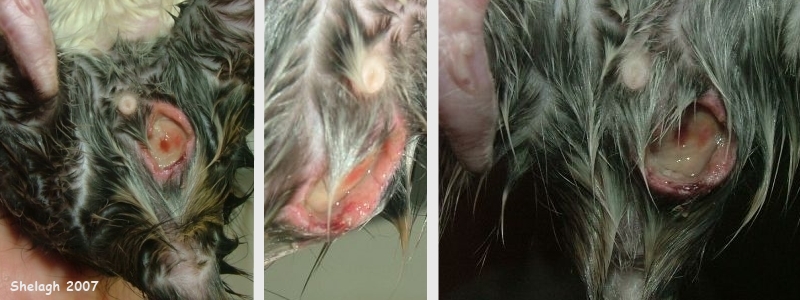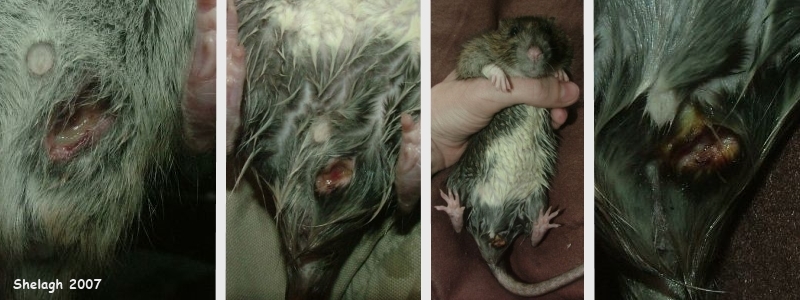Figure 5f: Post neuter abscess. A possible reaction to absorbable suture material used in male rat (Beni).
Case history and photos
History
Beni is a 10-month-old male rat that was rescued at 5 weeks of age. Following his neutering, at 4 months of age, Beni developed hard lumps on one side of his scrotum that didn’t respond to several courses of Baytril, over a 2 month period, prescribed by the veterinarian. It was hoped that the abscess would open to the surface. The lumps stayed the same until, at 6 months of age, the area started to swell overnight
Clinical Signs
Diagnosis
Abscess. Possible reaction to absorbable suture material used for neuter closure.
Treatment
The vet placed Beni, who weighed 275 grams, on a 2.5 mg oral dose of Baytril twice daily (based on 10mg/kg), as well as doing 2-3 soaks with Epsom salts daily (softening and removing scab if necessary), and then treating with Betadine, a disinfectant often used to clean minor wounds and to prepare the skin of surgical sites.
Outcome
With this regimen the abscess cavity quickly healed from the inside to the outside in a few days.
Comment
Considering that 2 other boys besides Beni, neutered on the same day, also developed abscesses (though much sooner) the vet felt that it was possibly a reaction to the brand of absorbable sutures being used. As a result a different brand is being used for future neuters.
Photos
 The first photo shows Beni at 6-months-old. In the center photo and the photo to right soaks have been started in effort to soften scab of abscess and ease swelling. |
 The first three photos in this row shows the scab removed and rupture of abscess. The last photo to the right shows the area following grooming by Beni. |
 In this row the photos show healing following the implementation of oral Baytril, and soaks with Epson salts followed with Betadine application. |
Case history and photos courtesy of Shelagh


